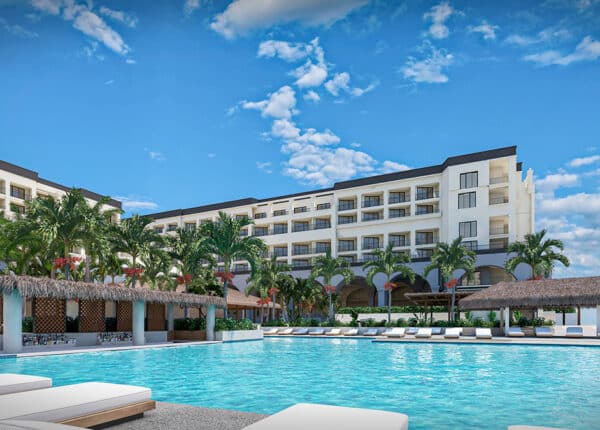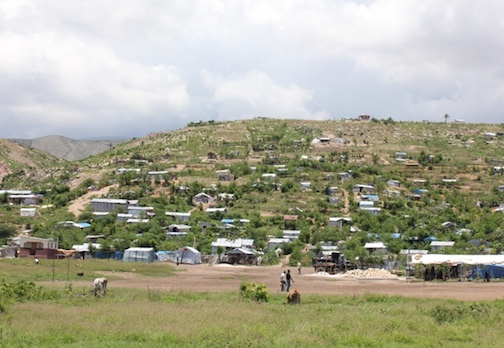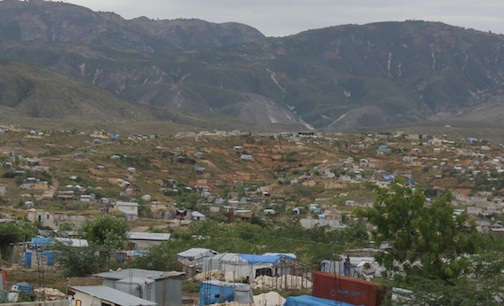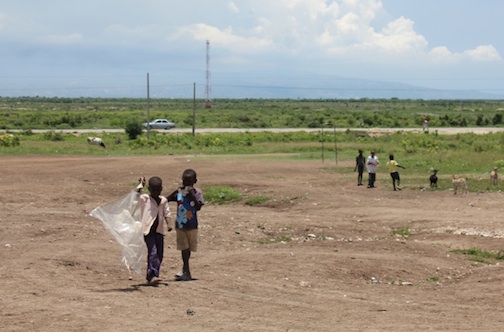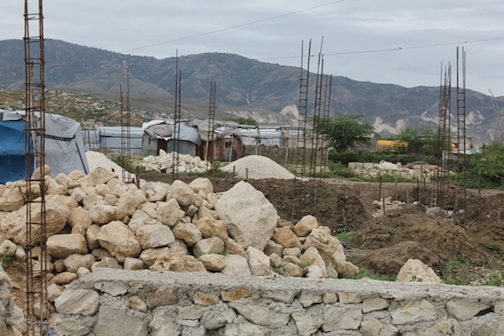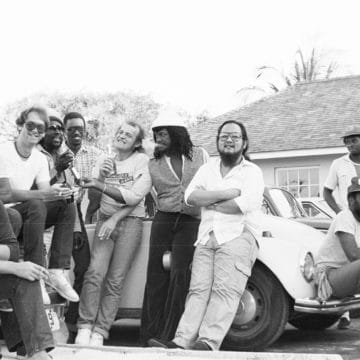In Haiti’s Land of Canaan, a Promised Land Empty of Promise
Above: Canaan in Haiti
By Kendi Zidor
Haitian Press Agency
Jeanne St Fleur spent more than two years living in a tent on the dusty hillside known as Canaan, in the northern end of Port-au-Prince’s metropolitan area. She moved there with her husband and four children after their home was destroyed in Haiti’s January 2010 earthquake.
Tired of living in what she called “the hell of tent life,” she began construction on a new home from income earned by a small business selling food products and metal artwork. She’s already spent “tens of thousands of gourds (42 gourdes/$US1)” on the construction of her home, though it’s still not done. Part of it is under wraps with a tarp like the one in which she used to live.
St Fleur’s story is similar to thousands of others who moved to the new “development” known as Canaan.
Close to the infamous slum of Cité Soleil and Haiti’s National Highway #1, the sprawling village is a visible eyesore. So, too, is the absence of any state assistance: sanitation, electricity, potable water, health services.
Even with the obvious lack of infrastructure, families flocked to the area. A UN Habitat study revealed that in the two years following the quake, Haitians have invested more than $60 million in building homes in Canaan and a neighbouring new development known as Jerusaleum, land better known as a hideout for bandits than prime real estate.
Even if there is a trace of lawlessness, the Canaan Organization for the Victims of the Earthquake has taken charge.
“People can’t build wherever they want if they weren’t here at the beginning when we divided up land,” said OVISEC leader Joseph Michel Volyn. “OVISEC has the authority to decide. And if people don’t want to stay here any longer, they can pass along their property to someone else.”
The homes, built without government permits, are made of tin, wood, blocks and other random material. The construction of Canaan homes ranges between 40 and 150 square meters.
Said UN Habitat programme Coordinator Jean Christophe Adrian, “This has been a lost opportunity, to not have harnessed this creativity. [It’s that] the houses are built in the same way they were them before the earthquake. It’s a shame that there was no training for [construction] workers in this sector following the earthquake.”
Their haphazard construction reflects the apparent anarchy in the area., particularly regarding sanitation. Some families share a latrine, others have dug a pit near their home or invented other unhygienic alternatives.
The “Potable” drinking water supply is available from two spigots connected to a cistern that was installed by Action Contre La Faim, a French non-governmental organization.
Residents pay to have it filled twice a week. “We pay 1500 gourdes ($37.50) to fill the water tank and sell five gallons for five gourdes (eight cents),” said resident Sadia Michel. “The water-treatment kiosk, built by a Canaan resident, offers no guarantee that it is, in fact, safe for drinking.”
Health care facilities are absent. “The nearest health center, in the community of Tabarre, is kilometers away,” said Michel, who complained about the difficulties of sleeping because of the mosquitoes which swarm around the stagnant pools of water. “Many children and adults have contracted malaria.”
How did people arrive in Canaan?
On March 22, 2010, then-President René Préval signed a document designating this land as public utility. Article One states: “Lands retained in this order of declaration for public utility will be used for the redevelopment of the metropolitan area of Port – in Port-au-Prince and in part to the relocation of the victims of the 12 of January 2010 earthquake.”
“We had nowhere else to take refuge after the earthquake,” said Canaan resident Magdaline Rousseau, who lived in the nearby Duvivier area of Cité Soleil before the trembler.
Like her neighbors, she considers it her right to occupy the land where she and her husband have built their home. “It was for the State, so it is for us,” she said, using the March 22 decree as an argument to offset any question about land rights.
As is true for other residents, Rousseau pays little attention to the second article of the decree, which forbids construction of any kind: “All construction work, road piercing, subdivision or other exploitation of the soil, and any transaction or real estate disposition are and remain prohibited on the extent of the area defined in article 1.”
The situation in Canaan has changed over time. To move onto the land now, a person must negotiate with the resident who took initial ownership. The amount the new resident will pay depends in large part on where the property is on the hillside. “A plot could cost 10,000 to more than 25,000 gourdes,” said an employee of Electrician perth Rémy “Boss” Nelson, “but in other parts you might not pay as much.”
Some of the plots belonged to speculators, so today it is not uncommon to see “for sale” or “for lease” signs on homes which are in the advanced phases of construction.
The crisis of the State
The invasion of Canaan is arguably unlawful as well as dangerous. An evaluation published by the Office of Coordination for Humanitarian Affairs (OCHA) in February 2011 revealed that the land is vulnerable to landslide from heavy rains. In fact, when Hurricane Tomas rolled through in 2011, several homes were destroyed.
The Unit of Construction of housing and Public Buildings public (UCLPB), an agency created after the lapse of the Interim Commission for the Reconstruction of Haiti (CIRH) at the end of 2011, hired a firm to develop a plan to urbanize Canaan. It was to have been ready this month.
“The plan was for the space in Canaan to be better organized and provide social services,” said UCLBP engineer David Odnell. “But this can only be possible after there has been an evaluation of the resources and programming of activities.”
Odnell admits that although the houses were built in total anarchy, no demolition operation has been planned. Even in the best cases scenario. no intervention is scheduled for Canaan any time soon.
The Mayor of the Croix-des-Bouquets, Darius Jean Saint-Angel, noted that the government, led by former Prime Minister Jean Max Bellerive, had already tried to correct a situation which he considers a real threat for his municipality. “Political unrest has prevented any attempts (to intervene) from taking off,” the mayor said.
The mayor is concerned that as time goes on the situation becomes even more difficult to resolve. Canaan, which is located on the road to the coast of Arcadins, a beachy tourist area on the west coast of Haiti, is losing valuable opportunities.
The only way for this town to live up to the beauty of the biblical town after which it was named, Saint-Angel says, is if action is taken — and at the highest level.
This report made possible with the support of the Fund for Investigative Journalism in Haiti.
